Eike Schmidt is the most high-profile of the new directors appointed to run Italy’s leading museums. He talks to Apollo about his sensitive reforms of the Uffizi and keeping up the pace of change
Eike Schmidt is a busy man. Arriving at the Uffizi to interview its director on a late Friday afternoon in February, I find a small huddle of people outside his office waiting to meet with him. When we finally sit down to speak, an hour or so later, the incoming phone calls and messages leave us only a few interludes in which to discuss his first 15 months in charge before he must depart, apologetically, for a reception welcoming the new musical director of the Florence Opera. For now, Schmidt tells me, this job occupies him seven days a week. We arrange to meet again the next morning at Palazzo Pitti – where, since taking up the post in November 2015, he has also been responsible for the collections, buildings, and the Boboli Gardens.
Schmidt is one of 20 new directors, seven of whom are non-Italians, who were appointed to lead Italian museums and heritage sites by the Italian culture minister Dario Franceschini in August 2015 (only one of the 20, Anna Coliva at the Galleria Borghese in Rome, was a reappointment; 10 further appointments were made in February 2017). The focus on strong leadership is central to Franceschini’s ambitious programme to reform a museum system that has long seemed moribund to Italian and international observers. These ‘super directors’, as the Italian press has dubbed them, enjoy an unprecedented autonomy over their respective institutions when it comes to managing collections, staff, and budgets. They will need it: the new directors are having to confront all manner of challenges, from tangled organisational structures to outmoded facilities and almost derisory digital strategies, as they set about bringing Italian museums in line with the requirements of a modern collection and the expectations of the modern museum-goer.
It is the imported cultural leaders who face the greatest scrutiny, and none more so than Schmidt. The Uffizi, which had more than two million visitors in 2016, draws larger crowds than any other art museum in the country, and for many of those visitors it is the museum that best encapsulates their vision of the Italian Renaissance and its Florentine cradle. ‘In a way it is the most national museum,’ Schmidt says. ‘Italians feel that this is their own museum.’ For a man whose decisions are reported – and analysed – in the local and national press, he is remarkably phlegmatic about the public nature of the role, although he admits that ‘You have to have nerves of steel every once in a while.’
‘I think, considering the tradition of Italy, the tradition of omertà, which is the opposite,’ he says, ‘that I’d rather have too much transparency. I think it’s a very positive thing that people in Florence, and all over Italy, really do care about museums and about the Uffizi.’ Reading coverage of the Uffizi in the Italian press, which sometimes reports even the flight on which a loaned painting will be transported, feels like a vast, media-driven version of Johan Zoffany’s Tribuna of the Uffizi: everybody wants to crowd in to have their say about the Uffizi. Schmidt recognises that his reforms will have their detractors, but is adamant that his aims are clear to both his colleagues and the public. ‘The work that I’m doing is not about any ideology,’ he says. ‘It’s about giving this museum a functional, running engine. People can connect with that.’
It is a singular circumstance in which to open one’s account as a museum director. The German-born Schmidt has a strong international reputation as a scholar and curator, specialising in the field of sculpture. He worked at the National Gallery of Art, Washington, D.C., from 2001–06, before moving to the J. Paul Getty Museum in LA and then, after a brief stint at Sotheby’s in London, to the Minneapolis Institute of Art, where he was head of the department of decorative arts, textiles and sculpture from 2009–15. In Florence, he seems content to assume the role of the outsider – ‘I have no moral debts to anybody. I didn’t carry anybody else’s baggage for years,’ he tells me – and indeed to use it to his advantage. In May 2016, Schmidt garnered much public sympathy when he paid a fine of €295 levied by the City of Florence for broadcasting without authorisation, after he had relayed public warnings through speakers about ticket touts to the long lines of visitors queuing outside the museum. But being a straniero – the first to run the Uffizi – is only part of the story. Schmidt arrived in Florence in 2015 with a thorough understanding of the Medici collections, having worked through the inventories during his PhD on the Medici ivories and during his time at the Kunsthistorisches Institut in the city from 1995–2000. His prior involvement here has been practical, too: in 2013, he co-curated ‘Diaphanous Passions: Baroque Ivories from the Courts of Europe’ at Palazzo Pitti.
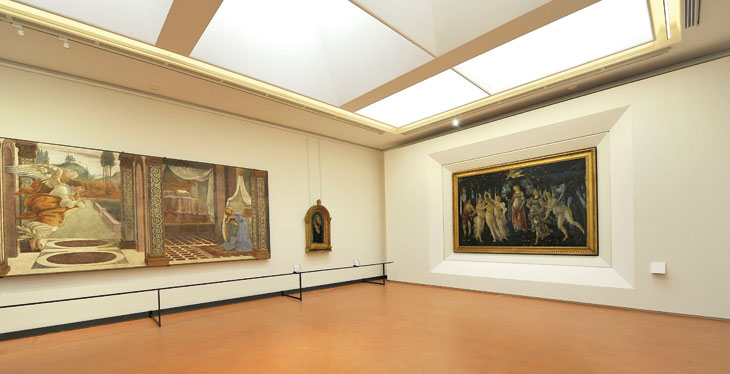
View of The Annuniciation of San Martino alla Scala (1481), and the Primavera (c. 1482), in the rehung Botticelli rooms at the Uffizi
Schmidt has taken up the task of reform with zeal, both in terms of the material changes he has made to the display of the collection and his ‘backstage work’ in overhauling the museum administration. Of the former, the most conspicuous (and most symbolic) has been the modernisation and redisplay of the Uffizi’s Botticelli rooms, the sequence of eight galleries that open with works by Paolo Uccello and Filippo Lippi and now culminate with the Portinari Altarpiece by Hugo van der Goes. ‘It was a once in a lifetime experience for a museum director,’ Schmidt says, ‘because these paintings won’t move around very much in the future at all.’ Vastly improved is the display of Botticelli’s works. Schmidt was determined that visitors should be able to see both the Primavera and the Birth of Venus at once, and that a solution was needed to avoid the muddled throng that used to mass in front of both paintings. By placing them on adjacent walls, and introducing partial partitions in this gallery, the works now stand together and apart; the metal barriers that used to stand before them have gone, and the paintings now nestle behind state-of-the-art (and barely discernable) glass, allowing visitors to inspect them closely.
‘We’ve used the works of art to guide people,’ says Schmidt. ‘It’s a very baroque principle to put the most important works in the sight line, and we’ve applied it to the most famous pictures: they serve as magnets to get you into the room. By creating more space around these famous works, people actually slow down. You feel like you have a direct contact with the works: you actually enter into the Primavera.’ That slowing down, and the newly intimate display, in turn encourages visitors to pause over other works in this room, seeking out compositional echoes – between the Birth of Venus and the Calumny of Apelles, say, which are now displayed next to each other. Here, too, is displayed the large fresco of the Annunciation from the church of San Martino alla Scala, which has rarely before been visible to the public; it is an exceptionally graceful treatment of the subject, in which the miracle seems to spread through the wide and deep architectural volumes that contain it.
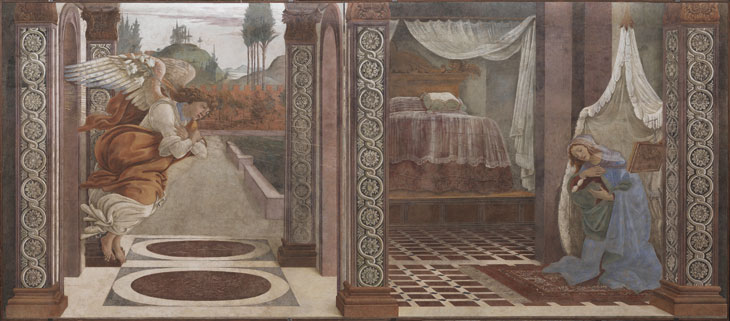
The Annunciation of San Martino alla Scala (1481), Sandro Botticelli. Galleria degli Uffizi, Florence
Crowd control is inevitably one of Schmidt’s highest priorities. This begins with the chaotic ticketing system, whereby visitors can queue for hours in high season or pay a premium for a timed ticket, the revenue from which goes to the private contractor that (mis)manages the system. ‘It’s virtually the same way of people purchasing tickets as they did when the Uffizi first opened to the public in 1769,’ Schmidt says. But as with the Botticelli rooms, so here art-historical opportunities coincide with practical concerns. ‘There are actually three layers to consider,’ says Schmidt. ‘People-flow and art history, of course, but also the history of the museum. We have some rooms, like the Tribuna, that are pretty much like they were historically. But there could be more. I’d like to reconstruct the original public entrance to the Uffizi.’ Improved access to the museum in the future, Schmidt suggests, might include a return of the entrance that Cosimo III commissioned from Giovan Battista Foggini in the early 18th century, with a vestibule displaying inscriptions and small- and mid-scale sculptures. It is currently an emergency exit.
Other galleries will be redisplayed, with the experience of the Botticelli rehang providing a model for fresh presentations of works by Michelangelo, Raphael, and Leonardo. These will all be shown on the second floor of the museum, rather than in the more repetitive enfilade of galleries on the first floor. ‘If we look at the presentation of art history in a museum, I do not think we have to narrate everything at the same speed,’ says Schmidt. ‘People get bored very easily […] There need to be fortissimo and pianissimo moments, largo and allegro moments.’ Leonardo’s Adoration of the Magi went back on display at the end of March after six years in restoration, with a special exhibition dedicated to its return (until 24 September). Schmidt has the Michelangelo room, which is currently ‘too decorative’, in his sights.
The Italian media has given much coverage to Schmidt’s intention to reopen the Vasari Corridor to visitors, not least because the plan has generated a high-profile dispute about fire safety. The enclosed, raised walkway snakes through Florence and across the Ponte Vecchio, linking the Uffizi to Palazzo Pitti; it was designed by Giorgio Vasari in 1564 for Cosimo I, to provide the Medicis with a secure passage between their main residence over the Arno and their administrative offices in the centre of the city. It currently houses the Uffizi’s vast collection of self-portraits, and is accessible only on special tours managed by private contractors (‘We won’t have any more open-ended contracts with private companies in the future,’ Schmidt insists). Once again, Schmidt’s rationale for reopening the corridor is elegantly historical: ‘I think it’s really important, in terms of how these buildings function, how they were originally connected,’ he says. ‘You understand Florence when you walk over the centre of it and have these beautiful views. You understand the city, its urbanism, in a way you never would do otherwise. That was central to the architecture of Vasari. He had these open loggie, which was very unusual at the time – known more from architectural treatises than actual built architecture.’
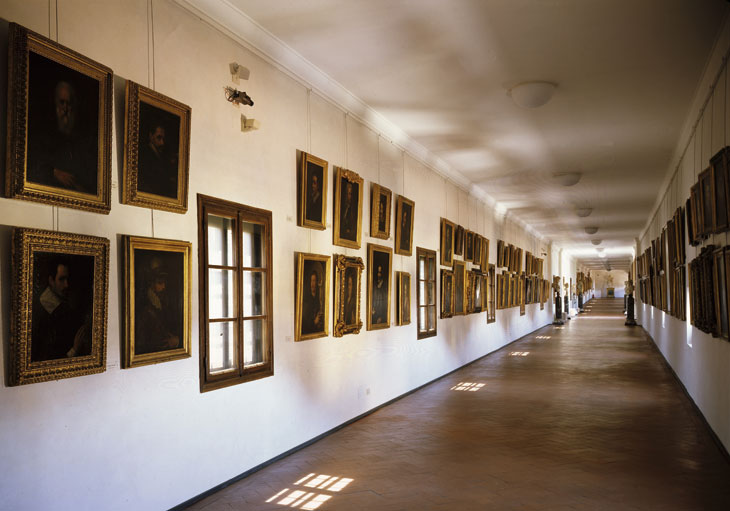
View of the Uffizi’s collection of self-portraits by artists in the Vasari Corridor (1445–1510), Galleria degli Uffizi, Florence
The intersection between the museums and the city is vital to Schmidt; it is informed by his knowledge of the history of Medici display and motivates how he sees the museums’ role in the current cultural resurgence of Florence. He cites as an example the recent removal of the so-called Verone on the middle floor of the Uffizi, which had long been closed up with dark plaster decoration so that the interior ‘looked like a 1970s discotheque’: ‘Now, when you go to the other side of the Arno you can actually see through the Uffizi, and see the Palazzo Vecchio, and the statues – the Bandinelli, the David, Neptune.’ ‘In sul fiume e quasi in aria,’ wrote Vasari of the Uffizi’s foundations: ‘in the river and almost in the air’.
Just as critical as the relationship between museum and city is the connection between the Uffizi and Palazzo Pitti: the reopening of the Vasari Corridor will be a highly symbolic achievement for a director who, without precedent, is responsible for both places and their multiple collections. As we sit in a café in front of Palazzo Pitti – the waiters call out ‘Direttore’ at every opportunity – I ask Schmidt how he is managing the consolidation of the two sites: ‘On the one hand it was a gift, on the other a huge initial burden,’ he says. ‘It was an opportunity to think about how radically I’d like to transform the organisation. I could have just doubled up everything, and had one curator for each field at the Pitti and another at the Uffizi. But it’s enormously helpful to consider these two realities simultaneously.’
Here too, Schmidt’s plans are dictated by the history of place and collecting: ‘The Uffizi has always been a place where art history has been shown – well, since the time of Luigi Lanzi and Pietro Leopoldo. The Pitti Palace was a grand ducal, royal, and imperial court, a living space, where there has never been an isolated art collection, but where the display of art has been determined by the life of the courts that were there, deeply intersecting with music and fashion.’ In Schmidt’s first year as director, opera was staged in the courtyard of Palazzo Pitti for the first time in almost 30 years; and in the palace’s Sala Bianca, the catwalk – so prominent a feature for three decades from 1952 onwards – came back for the first time since 1982.
Schmidt’s reference to his curatorial team is a reminder of what is perhaps his most challenging task. Administrative reform – ‘the dirtiest of the dirty work’, he calls it – is essential if the ‘Gallerie degli Uffizi’ (the umbrella term now given to the museum group) are to operate efficiently and improve their facilities, programmes, and international standing. Schmidt has taken bold early steps to improve museum organisation. ‘There were 11 exhibition departments,’ he tells me, ‘sometimes promising paintings to different exhibitions at the same time. That was the first department that I unified. […] ‘We had curators with job descriptions like “15th-century painting up to 1475, but also northern paintings in the first three rooms on the second floor”. I simplified everything.’
Improving the international reputation of Italian museums is also about transforming their programmes, and rethinking how they fit into wider national and global museum trends and networks. Schmidt’s most notable innovation in this respect has been the announcement that the Gallerie degli Uffizi will now dedicate two exhibitions every spring to women artists. Currently on show is an exhibition at the Uffizi of the work of Plautilla Nelli, the 16th-century Dominican nun thought to be the first woman to treat the subject of the Last Supper and one of the few female painters mentioned by Vasari (until 4 June); it is complemented by a display of works by the late Austrian artist Maria Lassnig at Palazzo Pitti (until 25 June).
Besides the exhibition programme in Florence, Schmidt is determined to support Italian regional museums through significant loans. Last year, the Galleria Palatina at Palazzo Pitti sent Caravaggio’s Amorino dormiente (Sleeping Cupid) to the Sicilian island of Lampedusa; at the time, Schmidt reflected on how its subject of a reclining infant, presented in the context of this infamous landing point for migrant boats, acted as a type of memorial for those child refugees who never make the shore. Closer to home, the Uffizi will loan Leonardo’s first dated drawing, that intricate landscape of the Val d’Arno that is dedicated to Santa Maria della Neve, to the town of Vinci in 2019, marking the 500th anniversary of the artist’s death.
Unsurprisingly, Schmidt supports Franceschini’s reform programme and hopes that further changes will be forthcoming. But he is not under any illusions, admitting that Italy’s chronic political instability has directly inspired his own resolve: ‘The risk is that any new government, with a new minister, might go in the opposite direction. That’s the reason that I’m trying to do one reform a week at least. The more that’s done, the harder it is to turn it back.’ His tenure, like that of politicians and opera directors in Italy, is fixed at four years, with every possibility of a second term to follow.
Does he miss the research-based work through which he made his name? Schmidt smiles: ‘I will do research again in the future, unless I have a big heart attack and die. In ancient Roman history, it was Cincinnatus who was working on his fields as an agrarian, and then he was called to lead the army – and after that was done, he went back and picked up exactly where he left off.’ For now, Eike Schmidt has plenty of other battles to fight.
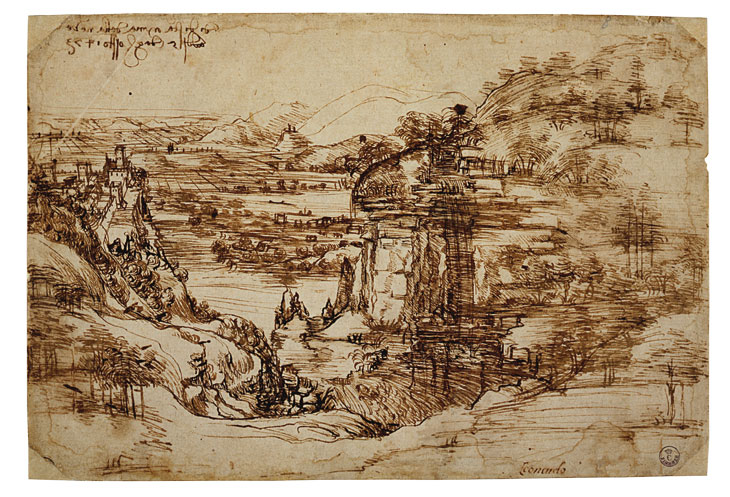
Landscape drawing for Santa Maria della Neve (1473), Leonardo da Vinci. Gabinetto Disegni e Stampe degli Uffizi, Florence
From the April 2017 issue of Apollo. Preview and subscribe here.
Unlimited access from just $16 every 3 months
Subscribe to get unlimited and exclusive access to the top art stories, interviews and exhibition reviews.

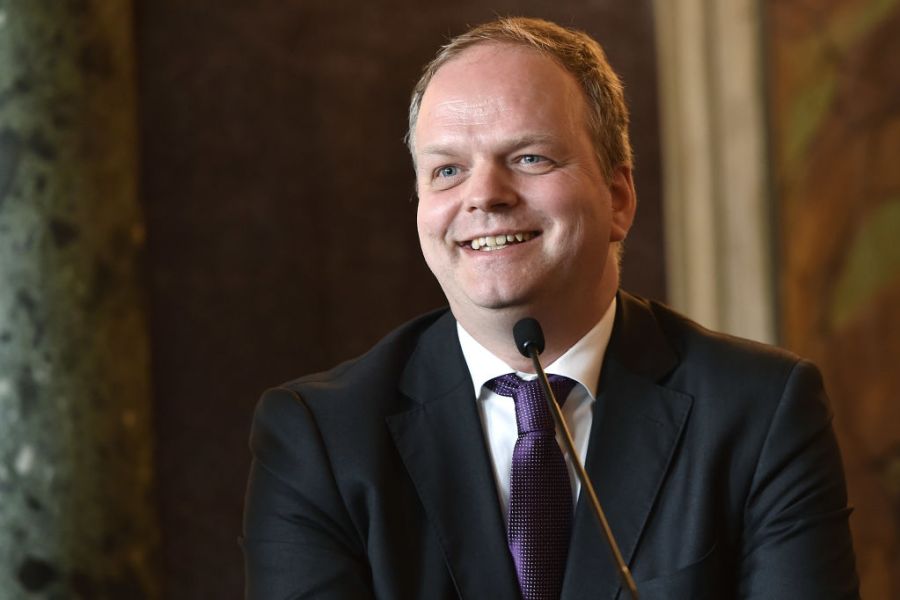



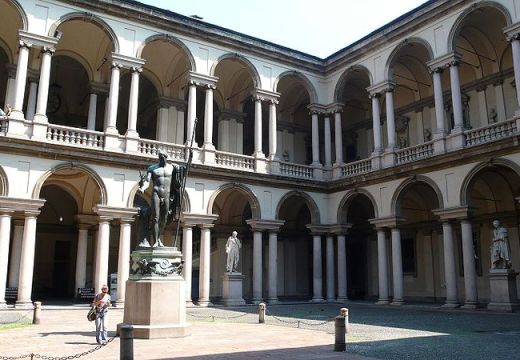
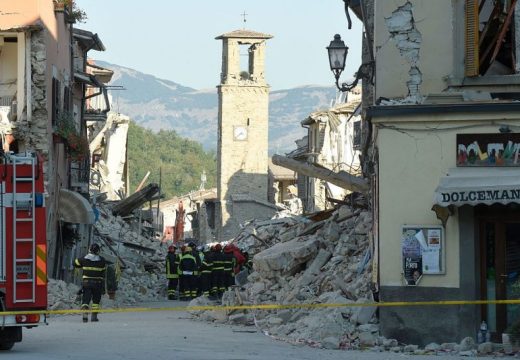
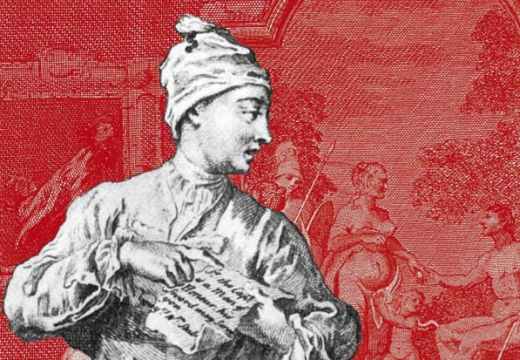









![Masterpiece [Re]discovery 2022. Photo: Ben Fisher Photography, courtesy of Masterpiece London](http://www.apollo-magazine.com/wp-content/uploads/2022/07/MPL2022_4263.jpg)
It’s time for the government of London to return to its rightful home